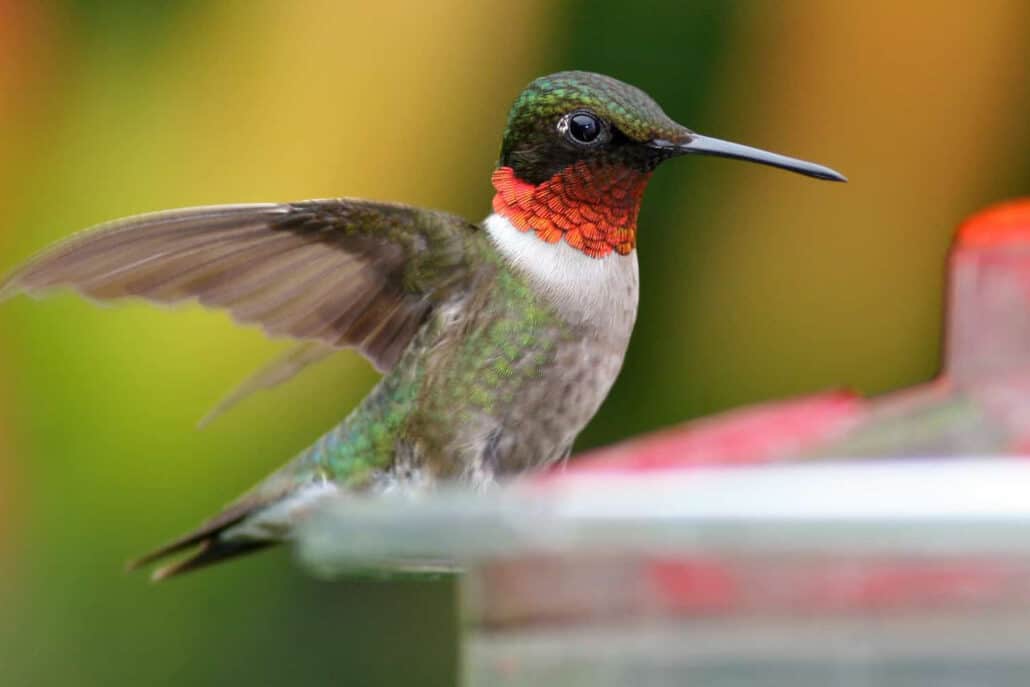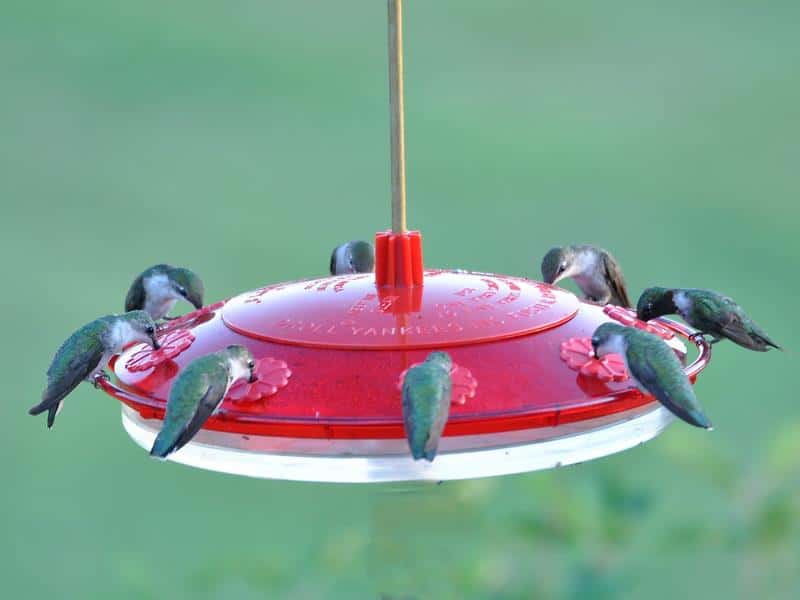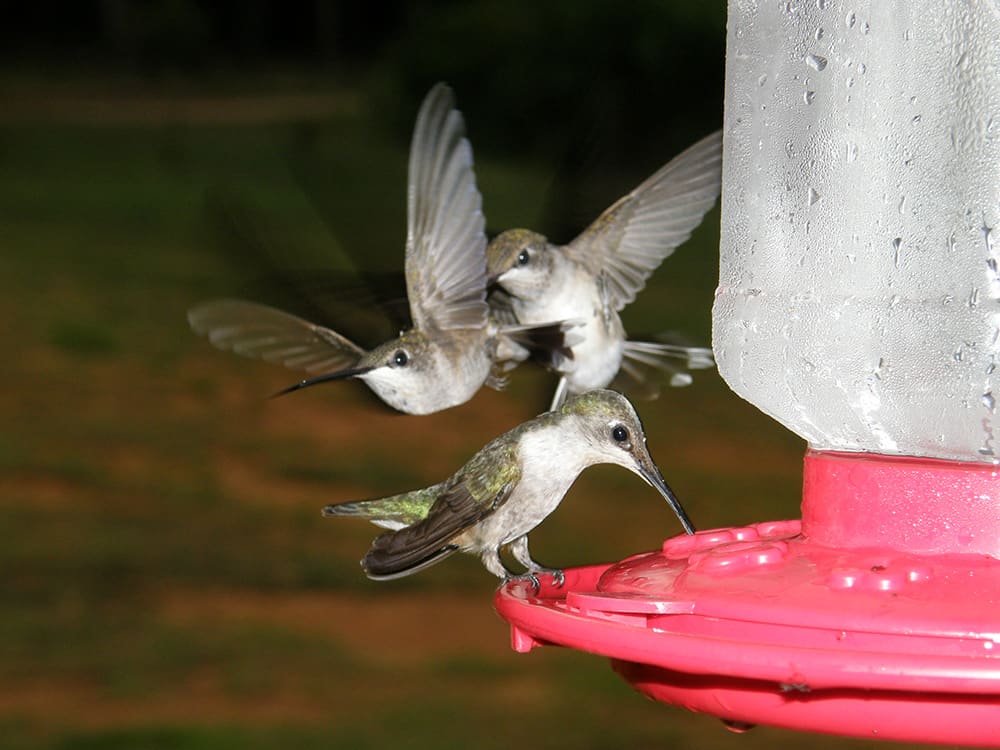
One of the most persistent myths in the world of birds is that hummingbirds migrate on the backs of larger, stronger birds. On the surface this might make sense, if one is willing to put one’s brain in neutral and simply rely on one’s natural ability to presume something is true. After all, hummingbirds are tiny little things.
How could they possibly migrate over a long distance, overcoming enormous natural obstacles? Take the ruby-throated hummingbird for example: It migrates south from the eastern United States and Canada, across or around the Gulf of Mexico, to spend the winter in the tropics. It’s gotta have some kind of help, right? Poor little sprite.
Well, that myth is so much horse hockey. Ruby-throateds make it on their own just fine by using some techniques that are not that different from other birds’ strategies. They fatten up for the trip by eating large amounts over a period of days prior to migrating.
They may also wait for favorable winds to help them along their route. But one thing they do not wait for is a friendly passing goose upon which to hitch a ride.
Myth #2: Hummingbirds only feed on red flowers
While it seems to be true that brightly colored flowers are more easily noticed by hummingbirds because their vision skews to the red or “warm” part of the light spectrum, hummers will feed from flowers of any color so long as the blossoms contain nectar. In our garden the rubythroats regularly feed on purple, pale blue, and yellow flowers. Bright red, however, seems to be the color that most readily catches a passing hummingbird’s eye.
Myth #3 Nectar in feeders must include red dye to attract hummingbirds

Red dye in nectar you offer in your feeders is totally unnecessary. Most feeders have bright red parts, which will attract a curious, hungry hummer. If your feeder lacks red parts, hang a bright red artificial flower on the feeder, or a short piece of pink surveyor’s tape, or a red bandana. Red dye is an unnecessary additive and it may pose a health risk for hummingbirds that ingest a lot of it. My advice: Say bye-bye to red dye.
Myth #4 Hummingbirds must migrate to survive
This is true for many of our North American hummer species—they must migrate to habitats that have blooming flowers and active insects. But not all hummers migrate. Many Anna’s hummingbirds spend the winter along the Pacific Coast. And some hummers, like the rufous hummingbird which nests as far north as Alaska, are hardy enough to survive late spring snowstorms.
Myth #5 Remove feeders in fall to encourage hummers to migrate
Field studies and testing have shown that hummers migrate when an instinctive inner urge tells them to move. When this happens, nothing short of injury or illness will keep a hummingbird from migrating. But leaving your feeders up and filled in fall may help late migrants (often birds hatched that summer) refuel on their way south. Hummers that hang around feeders late into the fall are likely individuals that are sick or injured. Your feeders may be helping them to survive and recover.
Myth #6 Have no feet/Can’t perch
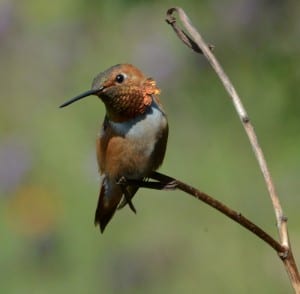
Do I really need to refute this one? Hummers have tiny feet and they do not walk well, but these feet work great for perching, and hummingbirds do a lot of perching while resting and digesting their food.
Myth #7 Sip nectar through strawlike tongue
Very few of us will ever get a close-up look at a hummingbird tongue, or even be able to see that it flicks into a flower or nectar feeder up to 18 times per second. The tip of a hummingbird tongue is split, and the outer edges curve inward, creating two parallel tubes into the mouth. The tubes don’t close, though, so sucking liquid isn’t possible. Rather, as a hummingbird extends its tongue, its bill compresses the tubes at the tip, making them flat. When the tongue hits the nectar, it springs into its curled position, trapping the nectar in the tubes. When the bird retracts its tongue, the split tips form into the shape of an ice cream cone, so the nectar doesn’t spill out. It’s as though the tongue grabs nectar and pulls it into the mouth. Pretty cool, isn’t it?
Myth #8 Nectar at feeders is better for hummers
Naturally occurring flower nectar from native plants and small insects are the mainstays of a healthy hummer diet. Nectar at feeders is an approximation of natural flower nectar, just as fast-food burgers are an approximation of actual food.
We owe it to our hummingbirds to offer the nectar in the proper ratio (4 parts water to 1 part sugar) and to keep our feeders clean. Even so, what we offer in our feeders is not as good as the “real thing.”
Myth #9 Hummingbirds mate for life
Hummingbirds don’t even mate for a minute. The male impresses a female sufficiently to earn a few seconds of copulation so he can fertilize her eggs and that it. We humans love to impose our views of “family values” onto creatures in nature but things rarely work that way. And with hummers, the dads are all deadbeats and the moms are all single parents struggling to raise the family.
Myth #10 Males have brightly colored feathers on throat (gorget) and head
In reality the feathers on a male hummingbird’s gorget or throat are not brightly colored. Rather they contain tiny light-reflecting particles in the structure of the feather. These particles catch light, absorbing some of the light, and reflecting other portions of the color spectrum. This reflection of light produces the brilliant colors we often see on the throats and heads of male hummingbirds.
Myth #11 I have a family of hummingbirds visiting my feeders
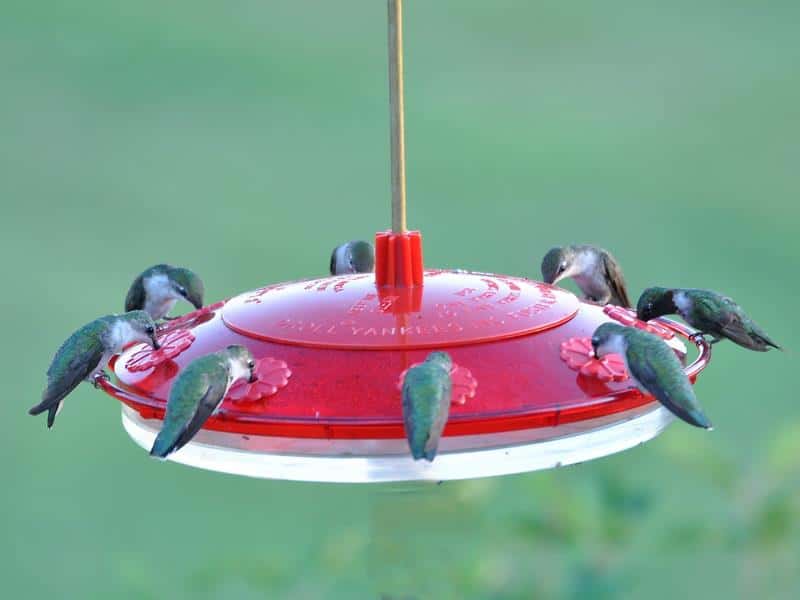
This statement has a couple of problems. First of all, family units don’t exist for long among hummingbirds, and they never include adult males, as we’ve learned. Females may supplement fledglings for a time, but it’s not thought that they move around in a family unit, visiting feeders together.
Secondly, telling individual hummingbirds apart is nearly impossible for most of us. So how would we know how many and which individual hummers are visiting our feeders?
Hummingbird researchers working at busy feeding stations tell stories of catching individual hummingbirds in special (and very safe) cages for the purpose of banding, measuring, sexing/aging, and weighing them. They report catching birds all day long without any recaptures, or with just one or two recaptures.
There are far more hummingbirds visiting a single garden or feeder than we perceive. Over the years of doing such work, these experts have arrived at a way to calculate the actual numbers visiting. They suggest counting the number of hummingbirds you can see at your feeders at one time, during the busiest time of day. Then multiply that number by six to arrive at the estimation of your total number of visitors.

